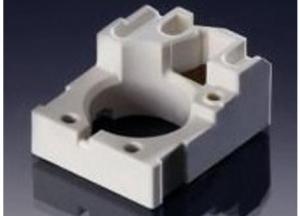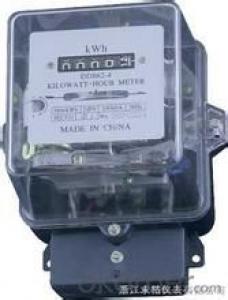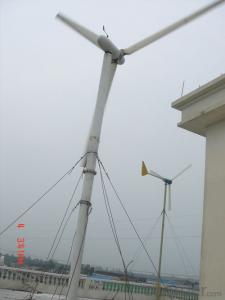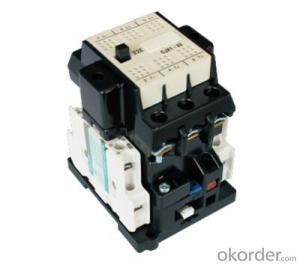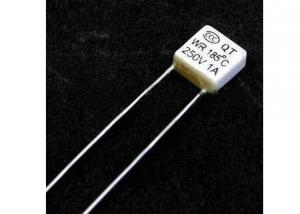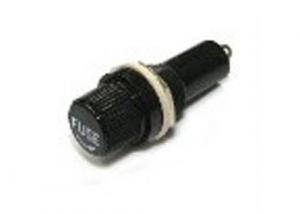FD12-20kw-40-3 Wind generator
- Loading Port:
- China Main Port
- Payment Terms:
- TT OR LC
- Min Order Qty:
- -
- Supply Capability:
- -
OKorder Service Pledge
OKorder Financial Service
You Might Also Like
Type: 3 Blade Upwind Rotor Diameter: 12.0 m Start-up Wind Speed: 2.5 m/s (5.6 mph) Cut-in Wind Speed: 3 m/s (6.7mph) Rated Wind Speed: 12m/s (26.8mph) Rated Power: 20k Watts Maximum Power: ~ 25k Watts Cut-Out Wind Speed: 15m/s(33.5mph) Timing manner: automatically adjust the windward angle Overspeed Protection: AutoFurl Temperature Range: -40 to +60 Deg. C (-40 to +140 Deg. F) Generator: Permanent Magnet Alternator Output Form: 360VDC Nominal | ||||||||
|
- Q: I was recently mudding and was stuck for quite a bit of time in mud up to my foot brake. When I went in my electric start odometer ect all worked. It even worked for a while in the mud then suddenly quit. I pulled it out and it will pull start and run fine but the 4x4 and all electrical components seems dead. I've checked the battery and it's good. I'm assuming it's a fuse or short ? But idk where to start. Thanks for all your help. Quick recap runs fine pull starts first pull but absolutely nothing electrical is working 4x4 selector lights starter nothing.
- Push up on the switch on the left handle bar. It is also the kill switch if you move it left or right. When it is in the center position it will push up as well to start the engine.
- Q: I had lab and I don't quite understand why I did what we did. We used an analog and digital VOM and used it to record the ohms and volts of various electrical components. I was wondering why when using the analog that different devices read completely different ohm readings. Take for example, our Buss fuse didn't even make the needle move, but the diode and the resistor made it go to infinite ohms. How do I figure out what they are supposed to read, and what to expect before going to lab. I couldn't find anything in my book or the lab manual. Also, I was wondering why a resistor would measure outside of its' tolerance range. Is this because it was faulty? Any help is appreciated.
- hmm - the fuse resistance was very low, the diode was infinite 'cos it didn't conduct - it would have done if you reversed the polarity ( turned it round!). This was an experiment - you do not ask what they are supposed to read, it's your job to find out by measuring.!!! That's Physics, not Criminology! The resistor could be out of tolerance, but so what? Just measure it's value as it is now.
- Q: I have a circuit keep blowing fuse(0.4A) with slightly lower rating of my transformer (0.5A) without any load, so i think is the issue of in-rush current. ***Note : my transformer is toroidal, saw a lot of website saying they inhibit higher inrush voltage (80times. scary)***Will the in-rush current will do any harm or any changes to other things(component) ?If so, what type or rating of fuse should i get ? (best if easily get, market available)ORis there any way to de-energize the transformer when it is turned off/before switch on, or any circuit to use for protect over-current/voltage during inrush ONLY ***Note that i want to make my circuit fuse safe from short circuit and blow the fuse if it is really short circuit***
- The inrush current here happens because of the large capacitor. Initially it has no charge and no voltage, so the initial current flow into it is only limited by the resistance and reactance of the transformer. If anything a toroidal transformer would increase the inrush current, because it has less reactance! but the difference will be negligible. The usual (cheap) solution is to use a 'slow blow fuse', which wont blow from ther brief transient. Sometimes, a resistance is connected initially in series with the capacitor to minimise the initial current, and then shorted out by a relay after a small time. The limitations of a transformer are mainly due to heating: the inrush current is only a short time, so it should not cause the transformer to heat beyond its rating. Also, the rectifier may be damaged by the inrush if it exceeds its maximum 'non-repetetive' peak current rating, but this is usually very large.
- Q: I believe I have a blown fuse and need to change.My dome light and power lock are not working and I believe that it's a fuse. The front cig lighter was not working but change fuse and now works. I have a 2k max gle. There are 2 fuse box in the engine dept that may also need fuse according to nissan book. The fuses seem to support several electronic but only list one component so it's difficult to tell what fuse is for power locks.Thank You
- look for power socket or cigar lighter in the fuse box under the cover above the hood release on the back of that cover is a list of what each fuse does. And in your owners hand book starting on secton / page 8/21 to 8/22 tell you what to look for. Page 8/21 details the under hood fuses. Mostly red 10 amp and blue 15 amp fuses power those circuits. there are three spair fuses in the box marked spair you can use one of those until you get more. More often than not it is a bad cell phone charger in the power socket
- Q: I was able to find out what the source of amperage draw was coming from, and it is the IOD. It is drawing 0.426 amps. The meter reads 0.923 and the Vehicle reads 0.497 without it installed. Generally, vehicles should have this amount to begin with correct? What could possibly be the issue with the IOD? Why is there an excess in amperage draw?
- Typical settled current passing through the Ignition Off Draw fuse should be .005-.035 amps for retention of memory in radio/cluster etc. When testing, this current needs to be measured for a few minutes as it can remain high for up to three minutes. Ensure hood light is unplugged and all doors remain closed during testing so the illuminated entry system isn't activated. If contact is lost on the fuse terminals at any time during the test, internal timers in electronic components may reset requiring the test to start again. If you are getting .497A with the IOD fuse removed you have draw from another circuit and need to start pulling fuses one at a time to isolate the circuit drawing that current.
- Q: I have an Alpine CDM 7874 head unit in my car the lights have gone dim on 1 side of the faceplate. Is there some fuse I can chage to get them working again, or should I get a new faceplate?
- it maybe a fuse check your car fuses
- Q: I have 5mm LEDs that Im using to make automotive tail lights with and I need to know what I use for surge protection.
- No surge protection is required, and as for fusing, use a normal-blow fuse rated about 20% higher than the current normally drawn by the lights.
- Q: I have a Rover 420 GSI with an electrical problem. Battery drains over about 40 hours. Replaced it with a new battery. The alternator has also been tested. There is a 4A current being drawn all the time from the battery, when the car is turned off (overnight). I have tried removing all the fueses I can find but nothing makes it drop. I am no great electrical expert. owever, Ive tried removing the Alternator and fan out of line. As it wears down the battery the battery light starts indicating on the dashboard. I am guessing there is a relay or something held open. Is there some easy way of testing them? Thanks.
- If okorder
- Q: I have a 1992 ford f150 and it keeps blowing the fuse that controls the interior lights, the radio, the gauge lights, and the speedometer. Now don't say the speedometer hooks in with a cable because it doesn't. It's a clip of wires that plug into it. Anyway I have taken apart the entire dashboard and tested for grounds and everything is getting ground and I even found where it grounds on the body. Sometimes the fuse pops as soon as u put it in and sometimes it takes ten minutes. I looked at all the wires and nothing seems to be broken or chafed or crossed. It will pop even when the radio and gauge cluster is unplugged and I have wiring diagrams and the wires run through the light switch and even of that's unplugged the fuse pops. I am getting fed up with this thing. Been tryin to figure it out for an entire day and got nowhere. Help is very much appreciated
- My first thought would be that you don't have a high enough rated fuse plugged in. I know they're color-coded AND stamped with the amp ratingbut are you sure it's the right one? Have you gone up a size to see if that helps? If you have a short, going from a 10- to 15-amp fuse, for instance, won't really run the risk of damage—it'll still blow. If you're confident about the rating or going up a notch doesn't help, you might have to disconnect everything on that circuit and plug the components in one-at-a-time until you find what blows the fuse. Once you have a suspect, pop in a new fuse and plug in just that one thing. If it blows again with nothing else on, you know where your problem is. Good luck!
- Q: Alright so my setup is a sony xm-zr1852 1000w amp and 2 12 Dual 1100w subs. One day i was driving along and started to smell a burning scent then looked back and my trunk was smoking, shortly after that the subs stopped bumping. I pull over open the trunk and there is smoke coming off the subs. I check the two 30amp fuses in my amp and they are both melted. I replaced the fuses and now the amp is in protect mode and still no bump.What's the problem?
- you probably blew your subs, or fried the amp
Send your message to us
FD12-20kw-40-3 Wind generator
- Loading Port:
- China Main Port
- Payment Terms:
- TT OR LC
- Min Order Qty:
- -
- Supply Capability:
- -
OKorder Service Pledge
OKorder Financial Service
Similar products
Hot products
Hot Searches
Related keywords




